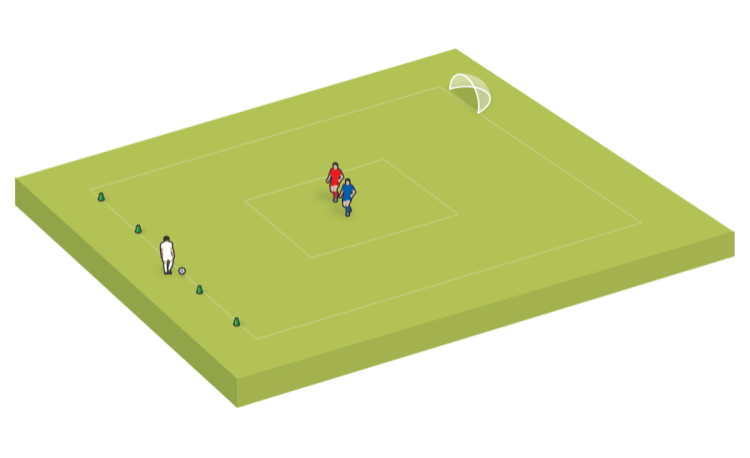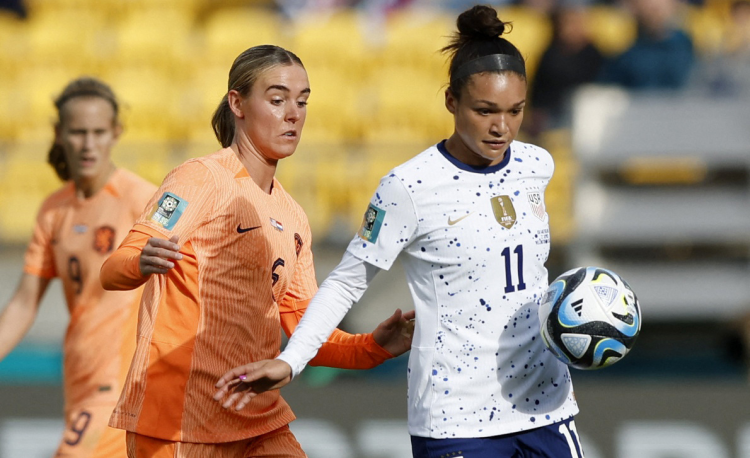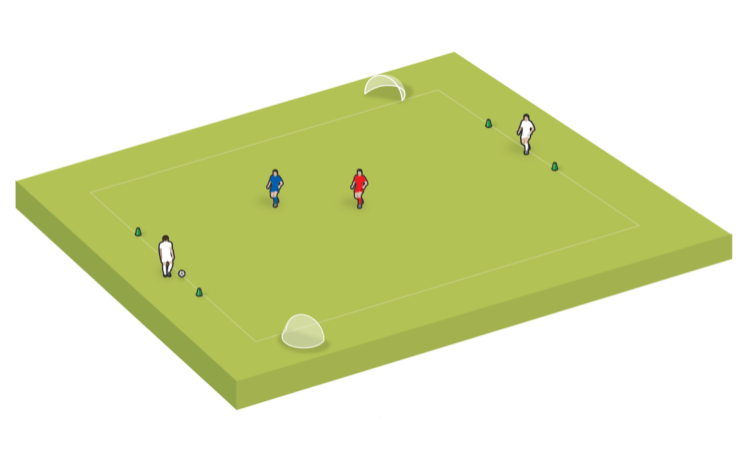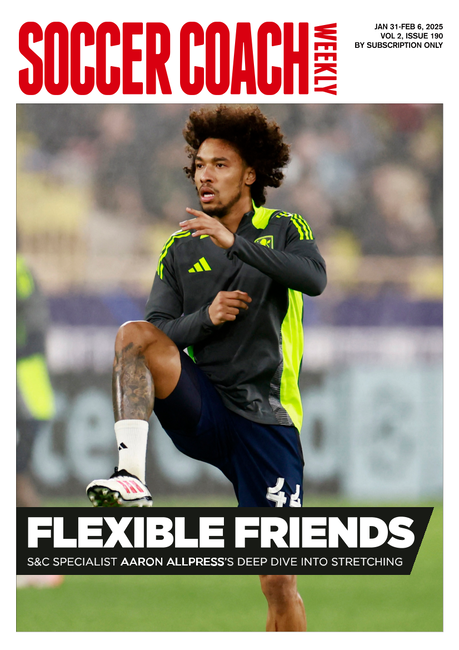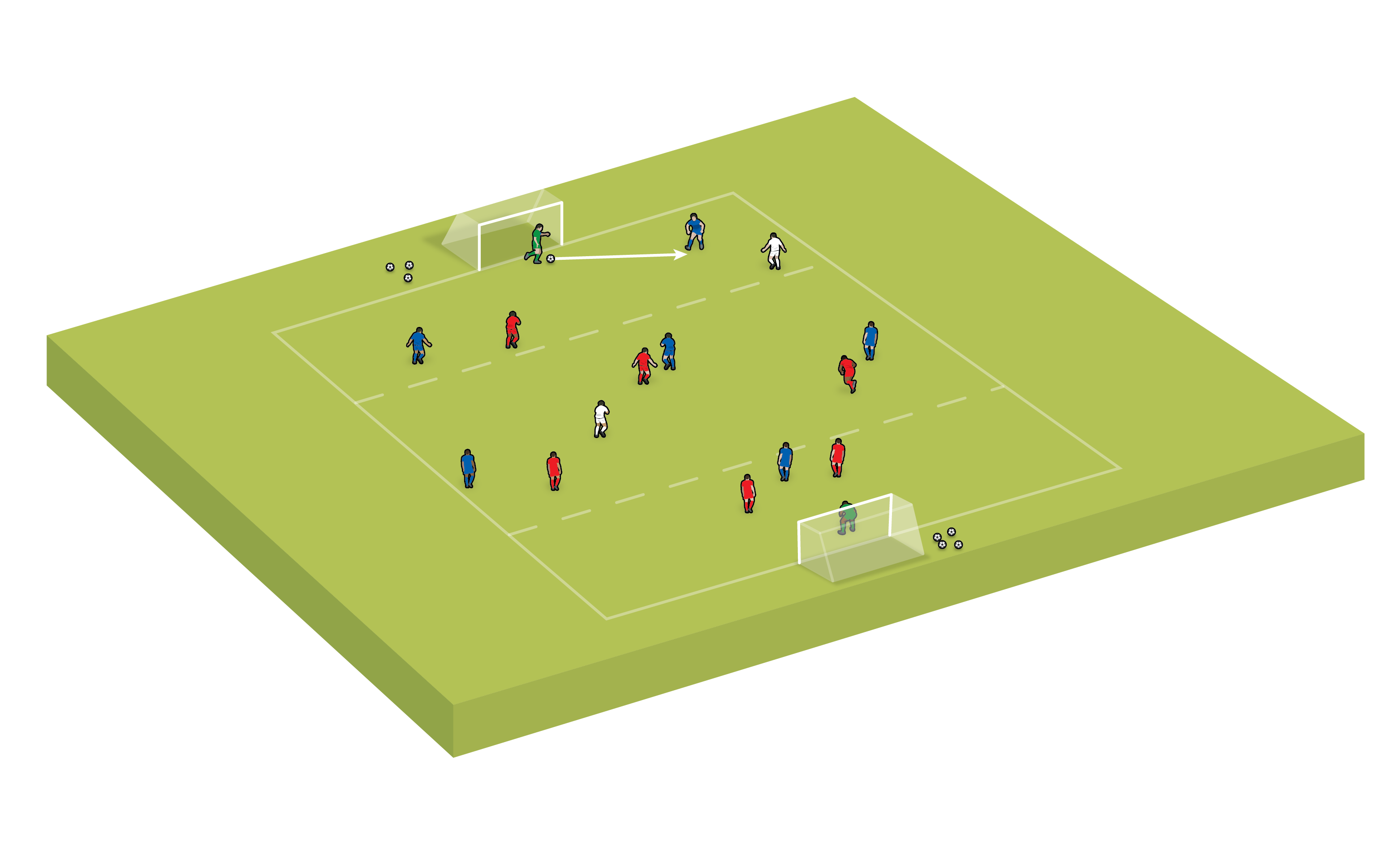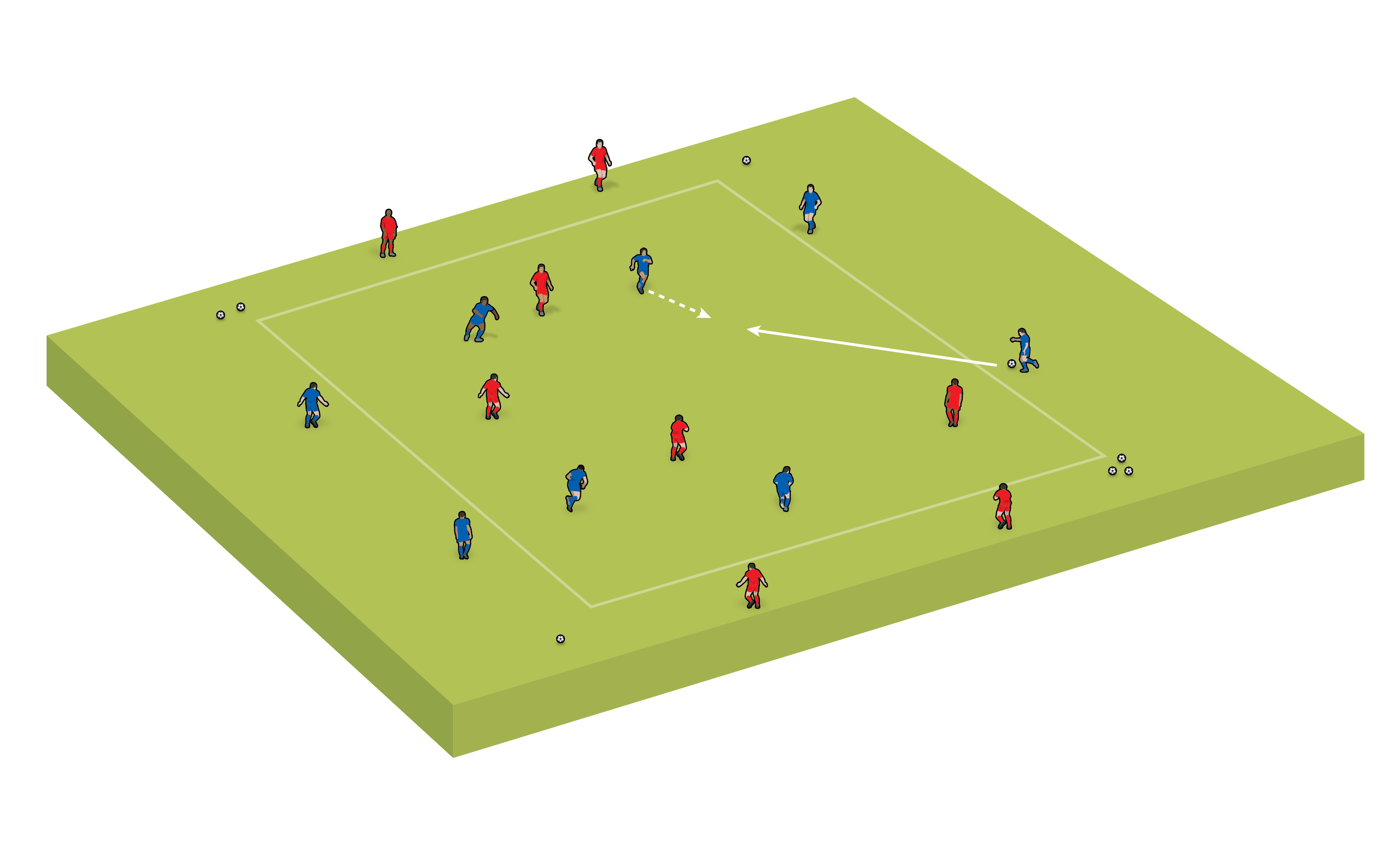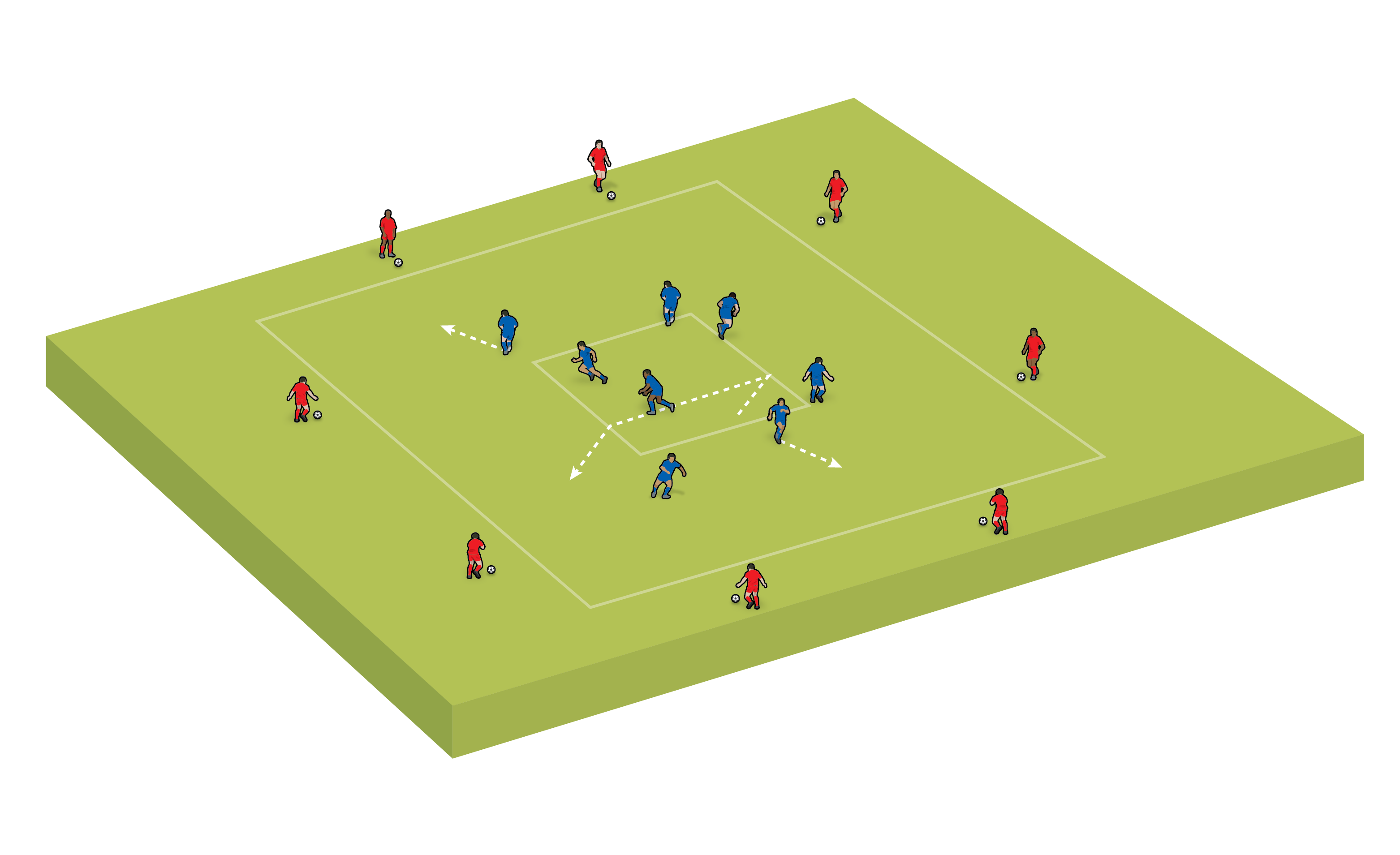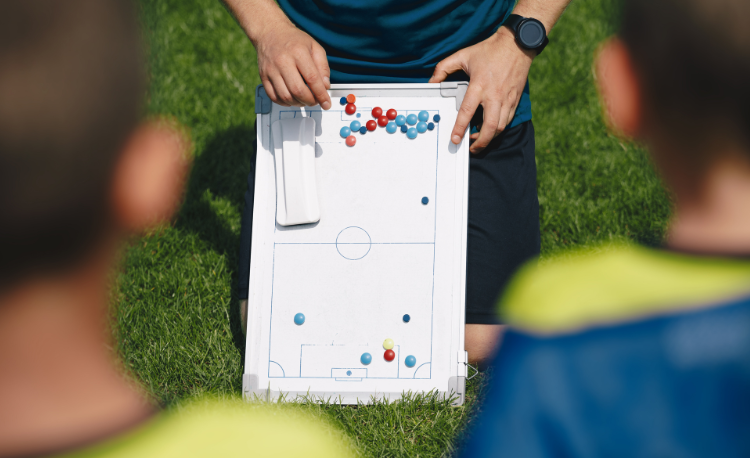What is marking?
Our consultant coach Carl Wild provides a novice’s guide to the art of staying close to attackers, how it is done and top tips on distances and marking space.
Marking is when a player stands close to an opponent so that they are in a position to challenge them or apply pressure should the ball come to that particular opponent.
Marking is present in various situations within the game and comes in different forms. We often see marking during a set piece, such as a corner, free-kick or goal kick.
In open play, marking mainly occurs in certain areas of the pitch and is more important as the opposition gets closer to goal.
In general, players will usually need to mark an opponent when the ball being played into them is a forward pass.
Why do we need to mark?
To discourage a pass
The main purpose of marking is to be close enough to an opponent to, first of all, discourage their team-mates from passing to them.
This obviously does not always work. Players will often still receive the ball despite being marked. In fact, this is occurring more often in the game as players are being encouraged to be comfortable receiving the ball while under pressure.
Players are also more likely to receive the ball while being marked when close to their opponent’s goal. It is unlikely players won’t be marked in this scenario, as this is the area of the field where the team out of possession wants to be as compact as possible.
"In open play, marking is more important as the opposition gets closer to goal..."
Attacking players are also happier to receive the ball in this area of the pitch while being marked because they are far away from their own goal and possibly in a position to have a shot themselves.
The risk of receiving the ball while being marked near the opposition’s goal is lower and the reward can be much higher.
To prevent a player’s next move
Although players are more comfortable in receiving the ball while being marked, that does not mean that we should no longer ask players to mark an opponent.
Marking the opponent as they receive the ball either prevents the player completing their next action or makes it a lot more difficult for them to do so.
Perhaps the best example of this is stopping a player from turning. If a player was not being marked, they could either receive the ball with an open body, removing the need to turn completely, or they could turn easily after receiving the pass.
Once they have turned, the player can, depending on where they are situated and what is around them, play forward, travel with the ball or even shoot. Marking a player can prevent any of this from happening.

To stop a team progressing the ball
It is not always just a player that needs to be marked. Sometimes a player needs to mark space as well as an opponent.
A player can cover an opponent in such a way so that pressure can be applied to either force a mistake or win the ball if they receive it, while at the same time occupying space to make it more difficult for the opposition to penetrate.
In this position, the defender can move across to the opponent if the ball is played to them, or block the pass if the player on the ball attempts to play through.
How do we mark?
Goal-side
The most important principle of defending in soccer is to protect the goal. The key element of marking is being in the correct position to do this.
The player marking always needs to be ‘goal-side’ of their opponent. Goal-side means a player needs to get their body between the ball and the goal.
Therefore, when marking, a player needs to get themselves in between the goal and the opponent. This makes it much more difficult for the attacking player to progress towards goal, be it through passing the ball or travelling with it themselves.
Correct distance
One aspect of marking that players may find challenging is getting the correct distance between themselves and their opponent.
Understandably, they often think the closer they get to the player the better, as they are putting them under pressure. But if they get too tight, it makes it easier for the attacker to turn past them, because the opponent can use the defender’s body to ‘roll’ past them.
"If a defender get too tight, it makes it easier for the attacker to ’roll’ past them..."
Once they have done this, the attacker will be facing forwards and the defender behind them will not be able to protect the goal.
A primary aim when marking a player is to keep them facing away from goal - they clearly pose less danger if they are facing their own goal, rather than the one they are attempting to score in. Allowing the player to turn therefore significantly increases the levels of danger.
To reduce the possibility of the player turning, the defender needs to leave a small amount of space between them and the attacker but still be close enough to be able to touch them. This is called ‘touch tight’.
By placing a hand or the forearm on the attackers back, it allows the defender to slightly push them, within the laws of the game, making it difficult for the attacker to have a stable platform and remain balanced.
It also allows the defender to feel changes in the attacker’s body shape, giving them an early indication of whether they are about to turn.
Also, by leaving a small space, the defender will still be goal-side and in a position to engage their opponent if the attacker manages to turn.
A defender should be closer and tighter to the player they are marking when inside the penalty box, because the attacker may only require one touch of the ball to score.
Therefore, the defender now needs to be in a position where they can get to the ball first, or be close enough to block any attempt on goal.
By remaining close to their opponent, a defender will be able to track the attacker’s runs and impede their movement to meet the ball. Putting their arm across the attacker means the defender has a chance of getting in front and reaching the ball first.
In other areas of the field this would be risky, because if the attacker gets there first, the defender will be out of position and no longer be goal-side.
In those scenarios, a defender can usually afford to be patient. But once in the penalty box, the situation becomes more urgent and getting there first becomes imperative, especially if the attacker is facing the goal and the ball is played in front of them.
Related Files

Marking space
When there is a need for a player to mark both space and an opponent, the main elements to focus on are positioning and anticipation.
In terms of positioning, a defender needs to be situated where they are able to prevent the ball being played through, while at the same time being in a position to move across to their opponent should a pass be played in that direction.
The defender needs to ensure their position allows them to get across to the opponent in time, to prevent them from playing forward or getting away.
To select the correct positioning, a lot of factors need to be considered: Where specifically on the pitch is the attack taking place? What is the bigger danger: the player who could receive the pass or the possibility of being penetrated?
If the ball is going to be passed to the attacker, the defender can help themselves to get across in time by anticipating the pass.
This can be achieved by identifying certain indicators - for instance, the player on the ball focusing on the intended target before looking at the ball, the body shape of the player who has the ball, the direction they are facing and any movement made by the player being marked.
Developing marking skills
Marking a player could be seen as straight-forward - at its most simple, it is standing close to an opposition player.
However, there are small pieces of detail that can have a significant impact on the success of marking.
If unsuccessful, the outcome can be quite damaging, especially when it is close to the goal.
Marking is a vital aspect of the game that players need to understand and develop. By following the tips in this article, and the following practices, your players can improve their ability to stick close to opponents.
Newsletter Sign Up
Coaches Testimonials

Gerald Kearney, Downtown Las Vegas Soccer Club

Paul Butler, Florida, USA

Rick Shields, Springboro, USA

Tony Green, Pierrefonds Titans, Quebec, Canada
Subscribe Today
Discover the simple way to become a more effective, more successful soccer coach
In a recent survey 89% of subscribers said Soccer Coach Weekly makes them more confident, 91% said Soccer Coach Weekly makes them a more effective coach and 93% said Soccer Coach Weekly makes them more inspired.
*includes 3 coaching manuals
Get Weekly Inspiration
All the latest techniques and approaches
Soccer Coach Weekly offers proven and easy to use soccer drills, coaching sessions, practice plans, small-sided games, warm-ups, training tips and advice.
We've been at the cutting edge of soccer coaching since we launched in 2007, creating resources for the grassroots youth coach, following best practice from around the world and insights from the professional game.

